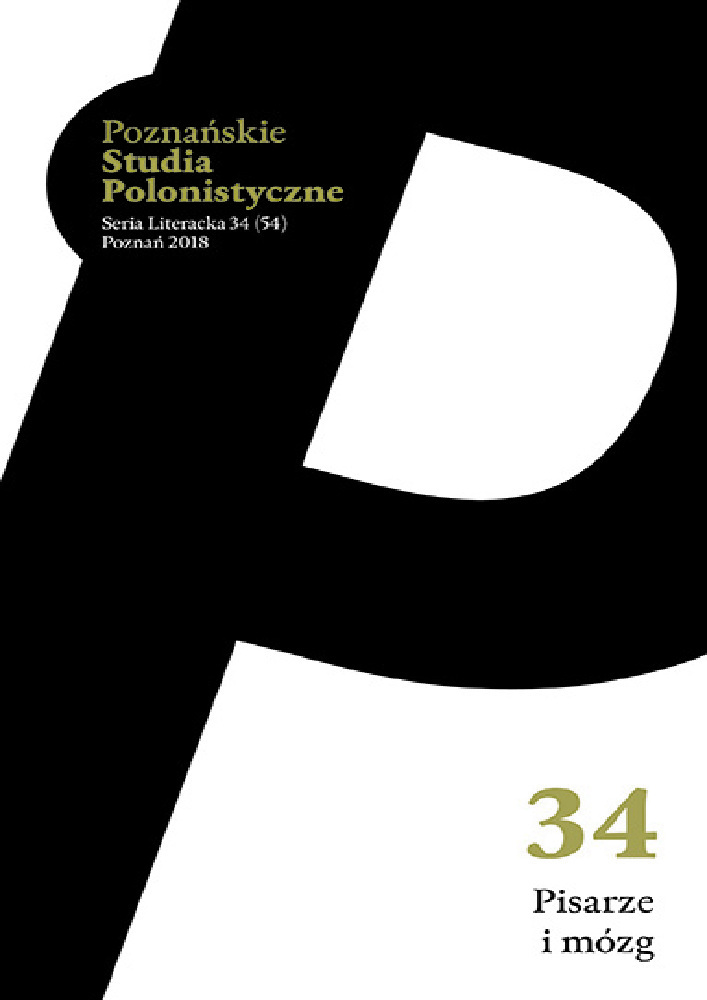Abstrakt
In this article, the author discusses and reviews the first Polish critical edition of Johann Wolfgang Goethe’s The Green Snake and the Beautiful Lily (2015). The literary text was preceded by two elaborate scientific descriptions which the author of this article refers to. The primary focus is on the extensive German tradition of interpreting The Green Snake and the Beautiful Lily (Das Märchen, 1795), because the main spur of its development is the difficulty or inability to obtain its unambiguous interpretation due to the high degree of symbolism and the esotericism of this literary work. Both critical texts feature the following interpretation grounds: historic-literary – emphasizing the role of the literary circle of the Weimar Goethe and Schiller; historical – stressing the importance of the events associated with the French Revolution and its impact on the situation in Germany; philosophical – represented by Rudolf Steiner and his anthroposophic reading of this work; and poetological – focusing on the properties and functions of its poetics. Among the existing explication there is a lack of genology of the fairy tales and a lack of the placing the work in a broader context of ideas and works of Goethe, which, if taken into account could help to clarify its meanings.Bibliografia
Ćwiklak Kornelia (1999), Polskie przekłady „Fausta” Johanna Wolfganga Goethego. Studium porównawcze, „Pamiętnik Literacki”, z. 2, s. 153-177.
Dopart Bogusław (2013), Goethe i Byron w prelekcjach paryskich Adama Mickiewicza, „Konteksty Kultury”, t. 10, nr 3, s. 255-271.
Goethe Johann Wolfgang von (1990), Sämtliche Werke nach Epochen seines Schaffens. Münchner Ausgabe, red. Karl Richter, Herbert Göpfert, Norbert Miller, Gerhard Sauder, t. 8. 1, Briefwechsel zwischen Schiller und Goethe in den Jahren 1794 bis 1805, red. Manfred Beetz, Carl Hanser Verlag, München [Niemcy].
Goethe Johann Wolfgang (2015), Baśń. Das Märchen [wydanie polsko- -niemieckie], przeł. Krystyna Krzemień-Ojak, wstęp Wojciech Kunicki, red., oprac. i wprowadzenie Jarosław Ławski, Białystok.
Haas Agnieszka (2005), Polskie przekłady „Fausta I” Goethego. Próba krytyki i zarys recepcji, „Studia Germanica Gedanensia”, Gdańsk.
Koziełek Gerard (1994), Niemiecka baśń romantyczna, Wydawnictwo Uniwersytetu Wrocławskiego, Wrocław.
Kubale Anna (1984), Dziecko romantyczne. Szkice o literaturze, Zakład Narodowy im. Ossolińskich, Wrocław.
Kubisiak Małgorzata (2006), Baśń, w: Słownik rodzajów i gatunków literackich, red. Grzegorz Gazda, Słowinia Tynecka-Makowska, TAiWPN Universitas, Kraków.
Kunicki Wojciech (2015), O Baśni Goethego, w: Johann Wolfgang von Goethe, Baśń. Das Märchen [wydanie polsko-niemieckie], przeł. Krystyna Krzemień-Ojak, wstęp Wojciech Kunicki, red., oprac. i wprowadzenie Jarosław Ławski, Wydawnictwo Alter Studio, Białystok.
Kuziak Michał (2013), Inny Mickiewicz, Wydawnictwo słowo/obraz terytoria, Gdańsk.
Lednicki Wacław (1952), Goethe and the Russian and Polish Romantics, „Comparative Literature”, vol. IV, nr 1, s. 23-43.
Lipiński Krzysztof (1990), Goethes “Faust” als Übersetzungsvorlage, Kraków.
Lüthi Max (1982), Cechy narracji w bajce ludowej, przeł. Jan Mirosław Kasjan, „Literatura Ludowa”, nr 2, s. 63-69.
Ławski Jarosław (2015), Błędne ognie. O hipersemiozie w „Baśni” Goethego, w: Johann Wolfgang von Goethe, Baśń. Das Märchen [wydanie polsko-niemieckie], przeł. Krystyna Krzemień-Ojak, wstęp Wojciech Kunicki, red., oprac. i wprowadzenie Jarosław Ławski, Wydawnictwo Alter Studio, Białystok.
Ługowska Jolanta (2014), „Kopciuszk to ja!” W kręgu zagadnień baśniowej kompensacji, w: Baśń we współczesnej kulturze, t. 1, Niewyczerpana moc baśni: literatura – sztuka – kultura masowa, red. Kornelia Ćwiklak, Wydawnictwo Naukowe UAM, Poznań.
Mickiewicz Adam (1997), Goethe i Bajron, w: tegoż, Dzieła, t. 5, Proza artystyczna i pisma krytyczne. Wydanie Rocznicowe, Warszawa, s. 171-179.
Olschowsky Heinrich (2012), Johann Wolfgang Goethe & Adam Mickiewicz. Poeci jako ustawodawcy zbiorowej wyobraźni, w: Polsko-niemieckie miejsca pamięci, t. 3, red. Robert Traba, Hans Henning Hahn, Wydawnictwo Naukowe Scholar, Warszawa.
Szmydtowa Zofia (1955), Mickiewicz jako tłumacz z literatur zachodnioeuropejskich, PIW, Warszawa.
Waksmund Ryszard (2000), Rehabilitacja baśni, w: tegoż, Od literatury dla dzieci do literatury dziecięcej, Wydawnictwo Uniwersytetu Wrocławskiego, Wrocław.
Zarych Elżbieta (2010), Romantycy, myśliciele, inspiratorzy. Badania nad wpływem filozofii niemieckiej – od Kanta do Hegla – na literaturę polskiego romantyzmu, Wydawnictwo słowo/obraz terytoria, Gdańsk.
Licencja
Autorzy
Autorzy tekstów przyjętych do publikacji w czasopiśmie „Poznańskie Studia Polonistyczne. Seria Literacka” są zobowiązani do wypełnienia, podpisania i odesłania na adres redakcji umowy o udzielenie nieodpłatnej licencji do utworów, z zobowiązaniem do udzielania sublicencji CC.
Zgodnie z umową, autorzy tekstów opublikowanych w czasopiśmie „Poznańskie Studia Polonistyczne. Seria Literacka” udzielają Uniwersytetowi im. Adama Mickiewicza w Poznaniu niewyłącznej i nieodpłatnej licencji oraz zezwalają na użycie sublicencji Creative Commons Attribution-NoDerivatives 4.0 International (CC BY-ND 4.0).
Autorzy zachowują prawa do dalszego, swobodnego rozporządzania utworem.
Użytkownicy
Zainteresowani użytkownicy internetu uprawnieni są do korzystania z utworów opublikowanych od 2016 roku w „Poznańskich Studiach Polonistycznych. Serii Literackiej” pod następującymi warunkami:
- uznanie autorstwa – obowiązek podania wraz z rozpowszechnionym utworem, informacji, o autorstwie, tytule, źródle (odnośniki do oryginalnego utworu, DOI) oraz samej licencji;
- bez tworzenia utworów zależnych – utwór musi być zachowany w oryginalnej postaci, nie można bez zgody twórcy rozpowszechniać np. tłumaczeń, opracowań.
Do wszystkich tekstów opublikowanych przed 2016 r. prawa autorskie są zastrzeżone.
Inne
Uniwersytet im. Adama Mickiewicza w Poznaniu zachowuje prawo do czasopisma jako całości (układ, forma graficzna, tytuł, projekt okładki, logo itp.).
